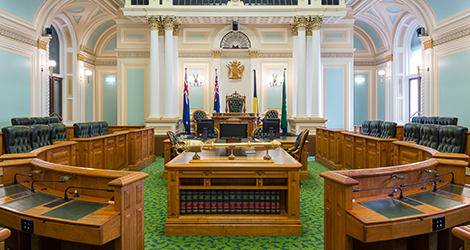
A new research report by Western Sydney University and Macquarie University into the impacts of outdoor heat on school children has made practical design recommendations to better cool our schools.
The report, School Microclimates, assessed a public school in western Sydney in the first comprehensive assessment of outdoor heat on school grounds. During summer last year, researchers collected more than 100,000 heat data points within the school. They also compared the temperatures of sunlit and shaded ground coverings and quantified the canopy cover of trees within its grounds.
According to lead researcher Dr Sebastian Pfautsch, from Western Sydney University’s School of Social Sciences, the report represents the first evidence-based design and building guidelines to address outdoor heat at school, with the recommendations made, applicable to schools Australia-wide.
“Our summers are becoming increasingly hot. To ensure students can benefit from time spent outdoors, there is a need to better understand the microclimates of our schools and to develop strategies to cool these environments down,” said Dr Pfautsch.
“Our study assessed features found in most schools — the school yard, gardens, tree groves, open spaces and the playground — to find unshaded surfaces, including asphalt, can reach up to 70 degrees Celsius. But by shading these surfaces, temperatures can be reduced by more than one third.”
The study found that avoiding artificial grass in unshaded spaces, shading black asphalt, allowing natural air flows and using shade materials with highly reflective upper surfaces, should be fundamental principles in design and building guidelines for heat-smart schools. It also found the lowest air and surface temperatures were recorded under tree canopies, with cooling benefits dependent on tree species, canopy size and availability of soil moisture.
Co-author Professor Michelle Leishman from Macquarie University’s Department of Biological Science said that: “This research has highlighted the importance of tree canopies in schools for cooling. Trees not only provide shade but also act as ‘green air-conditioners’ through evaporative cooling.”
“By understanding differences between species in their cooling benefits, water use and other characteristics, we can ensure that we choose the most appropriate trees for school grounds so that students will have the best possible cool and green learning environments.”
Using heat measurements from around the school, the researchers generated microclimate maps to plot outdoor temperature variations. Additional mapping also provided insights into temperatures during recess and lunch.
According to co-author, Professor Kathryn Holmes, from Western Sydney University’s School of Education, providing students with a safe and temperate outdoor environment at school is essential to their learning and wellbeing.
“The maps created can assist educators to better identify cool and hot zones in the school, and to develop heat-smart play strategies,” said Professor Holmes.
“Good physical health is important for both students’ wellbeing and cognitive outcomes in school. By providing school environments that are conducive to physical activity, and by controlling excess heat, students will be more likely to be physically active during the school day.”
This report forms part of the Cool Schools initiative led by Western Sydney University in conjunction with the NSW Government. The initiative aims to provide ongoing guidance on how to reduce the impacts of heat on school outdoor environments.






